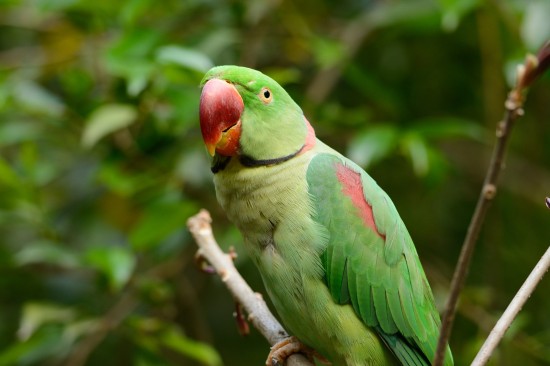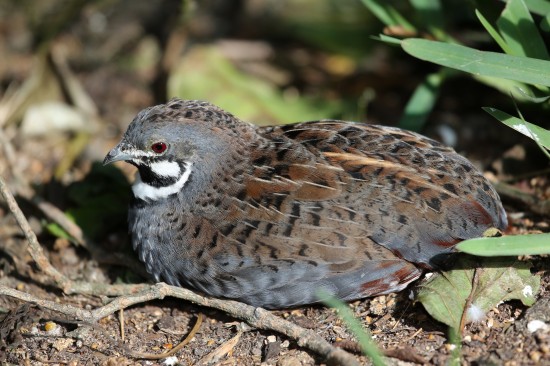
Can you imagine an aquarium without the green element? Indeed, an aquarium cannot be complete without plants. They provide the natural 'green' for the fish tank and create a pleasant backdrop with their beauty. Most importantly, they are part of the perfect balance in your aquarium because your fish like them and need the nutrients that they can provide. They can be in the form of grass, and serve as both food and shelter for your fish. From the thousands of species of plants, there are now hundred of types of grass that are popular and used in aquariums.
Some people prefer artificial grass or manufactured plants in plastic or silk. A lot of others prefer real grass, transplanted from a lake, river, pond or sea or even from an aquarium plantation. There are advantages and disadvantages in choosing either the live version or the imitation. Of course, nothing beats real grass and that is why many aquarium owners who love the hobby, always aim to get the real grass for their aquariums.
Artificial grass is easier to maintain than the real grass simply because it does not need light like real plants do, and it does not decay over time nor contribute to fish tank problems like ammonia build up. The fake grass is not subject to change in color, size and general appearance.
Once planted, artificial grass just needs a light bath in slightly salty water before being added to your the tank. It functions as a major decoration in the tank while the fish can use it as a playing field and a nice hiding place, but not as food. There are artificial grasses made with many materials but stay away from the grass made of metals and toxic materials as they will give you water quality problems later on. Make sure that the grass is especially manufactured for use in an aquarium and no other application.
Real grass on the other hand requires patient hands and eyes to maintain. It reacts to light, water temperature and the general activity of the aquarium. Real grass also reacts with live organisms such as the fish and other plants as well as the coral and rocks at the bottom of the tank. It helps stabilize the aquarium, because it can also absorb carbon dioxide and produce oxygen which helps your fish and your tanks entire ecosystem.
Being active, live grass can help break down bacteria and make the removal of waste more efficient, thus chemical filtration in your fish tank becomes almost unnecessary.
Real grass also provides organic food to fish especially the herbivore species that normally feed more often than the carnivore types. The grass needs special monitoring, care and maintenance as they may decay with time and that invites algae to grow, which can be toxic to your fish.
Live plants are also known to be carriers of possible pests and parasites in the tank, but for the benefit of the fish and for a healthier environment, let the grass grow and live. Once nibbled on by the fish, the grass may sometimes lose some of its beauty, but will still provide natural nutrients to the tank water. This is something not to worry about with fish tanks because even in their natural habitat in the wild, fish have always loved real grass for the nutrition it brings, the benefit of protection from predators and for spawning. Aquarium grasses like Willow Moss, Foxtail, Stonewort and Crystalwort are among the favourite plants for fish eggs, young live-bearers and baby fish.
As a decor, the grass can be the centrepiece. It may also serve as a foreground or background. The Four-Leaf Clover usually grows up to two inches high that it makes a pretty front grass, while the flowering Eel Grass and the Corkscrew are highly recommended as background grasses.
Grasses like the Salvinia and Duckweed are good top cover while the Micro-Sword Grass makes a magnificent foreground especially when coupled with a high intensity of light. In the same manner where light is a factor in enhancing the shape and color of the plant, varieties of Udwigia and Cryptocoryne are excellent choices. For Goldfish bowls, the Anacharis plant is a wonderful treat.
Using grass in your freshwater aquarium will add a nice look to your aquarium and provide your fish or whatever pets you have in your tank, with a pleasant and safe environment in which to live and breed in comfort.
Grass is grown from a few sources that are transferable to an aquarium thru a store which are, from the ground on grass farms or in pots or floats and also can come in solo blades or in bunches. With artificial grass, you only have to consider the shape and color in selecting the type that you will add. With real grass, you have to anticipate the size and appearance of the plant as it matures.
While both artificial grass and real grass have unique beauty, they have their pros and cons. The bottom-line is that it is still better to invest your money, effort and time for something that is real and is capable of completing the biological function of your aquariums mini-ecosystem.
It is also good to get something that is natural and will look better in your fish tank, and freshwater aquarium grass can complete your tanks balance and at the same time, provide a nice full and green look to an otherwise boring looking scene.
Get professional help with the grass and plants you use in your aquarium. Read http://www.freshwateraquariumcenteronline.com/freshwater-aquarium-live-plants/ .
Visit our website and let the pro's teach you the secrets of owning an aquarium. Sign up for our FREE freshwater aquarium email mini-course today at http://www.freshwateraquariumcenteronline.com
 Extraordinary Cat Breeds With Bobbed Tails
Extraordinary Cat
Extraordinary Cat Breeds With Bobbed Tails
Extraordinary Cat
 Alexandrine Parakeet
Alexandrine Parak
Alexandrine Parakeet
Alexandrine Parak
 Hidden Challenges And Risks For Your Dog On New Year’s Eve
Hidden Challenges
Hidden Challenges And Risks For Your Dog On New Year’s Eve
Hidden Challenges
 Keeping Quail In An Aviary
Keeping Quail In
Keeping Quail In An Aviary
Keeping Quail In
 Five Easy Steps To Curb Inappropriate Chewing In Dogs And Puppies
Five Easy Steps T
Five Easy Steps To Curb Inappropriate Chewing In Dogs And Puppies
Five Easy Steps T
Copyright © 2005-2016 Pet Information All Rights Reserved
Contact us: www162date@outlook.com